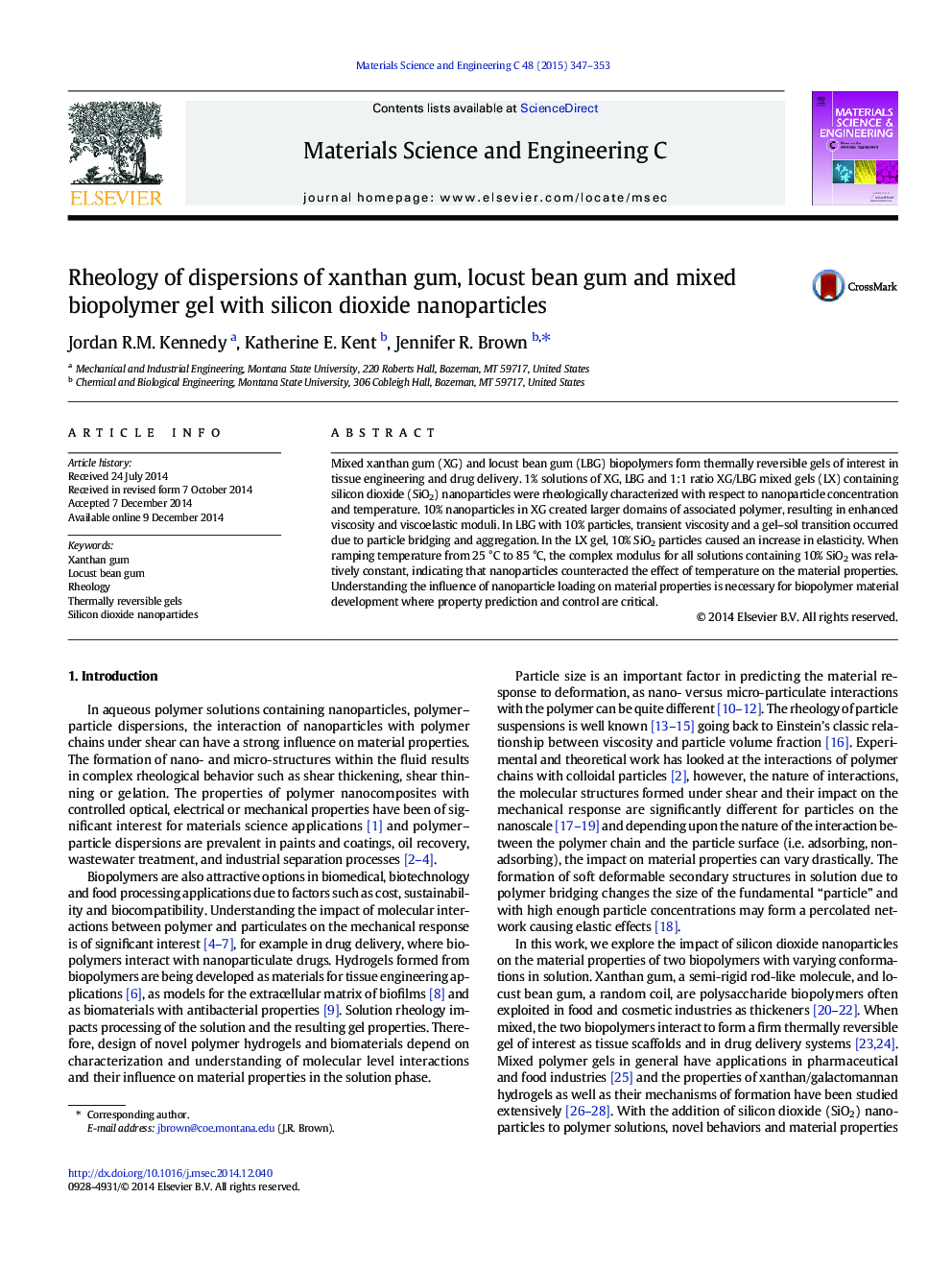| Article ID | Journal | Published Year | Pages | File Type |
|---|---|---|---|---|
| 1428466 | Materials Science and Engineering: C | 2015 | 7 Pages |
•Silica dioxide nanoparticles alter properties of biopolymer solutions and gels.•Nanoparticles increase viscosity and elasticity in xanthan gum solutions.•Transient viscosity and a gel–sol transition observed in locust bean gum solutions•Nanoparticles cause enhanced elasticity in xanthan/locust bean gum synergistic gels.•Complex modulus constant with temperature at high (10 wt.%) particle concentrations
Mixed xanthan gum (XG) and locust bean gum (LBG) biopolymers form thermally reversible gels of interest in tissue engineering and drug delivery. 1% solutions of XG, LBG and 1:1 ratio XG/LBG mixed gels (LX) containing silicon dioxide (SiO2) nanoparticles were rheologically characterized with respect to nanoparticle concentration and temperature. 10% nanoparticles in XG created larger domains of associated polymer, resulting in enhanced viscosity and viscoelastic moduli. In LBG with 10% particles, transient viscosity and a gel–sol transition occurred due to particle bridging and aggregation. In the LX gel, 10% SiO2 particles caused an increase in elasticity. When ramping temperature from 25 °C to 85 °C, the complex modulus for all solutions containing 10% SiO2 was relatively constant, indicating that nanoparticles counteracted the effect of temperature on the material properties. Understanding the influence of nanoparticle loading on material properties is necessary for biopolymer material development where property prediction and control are critical.
